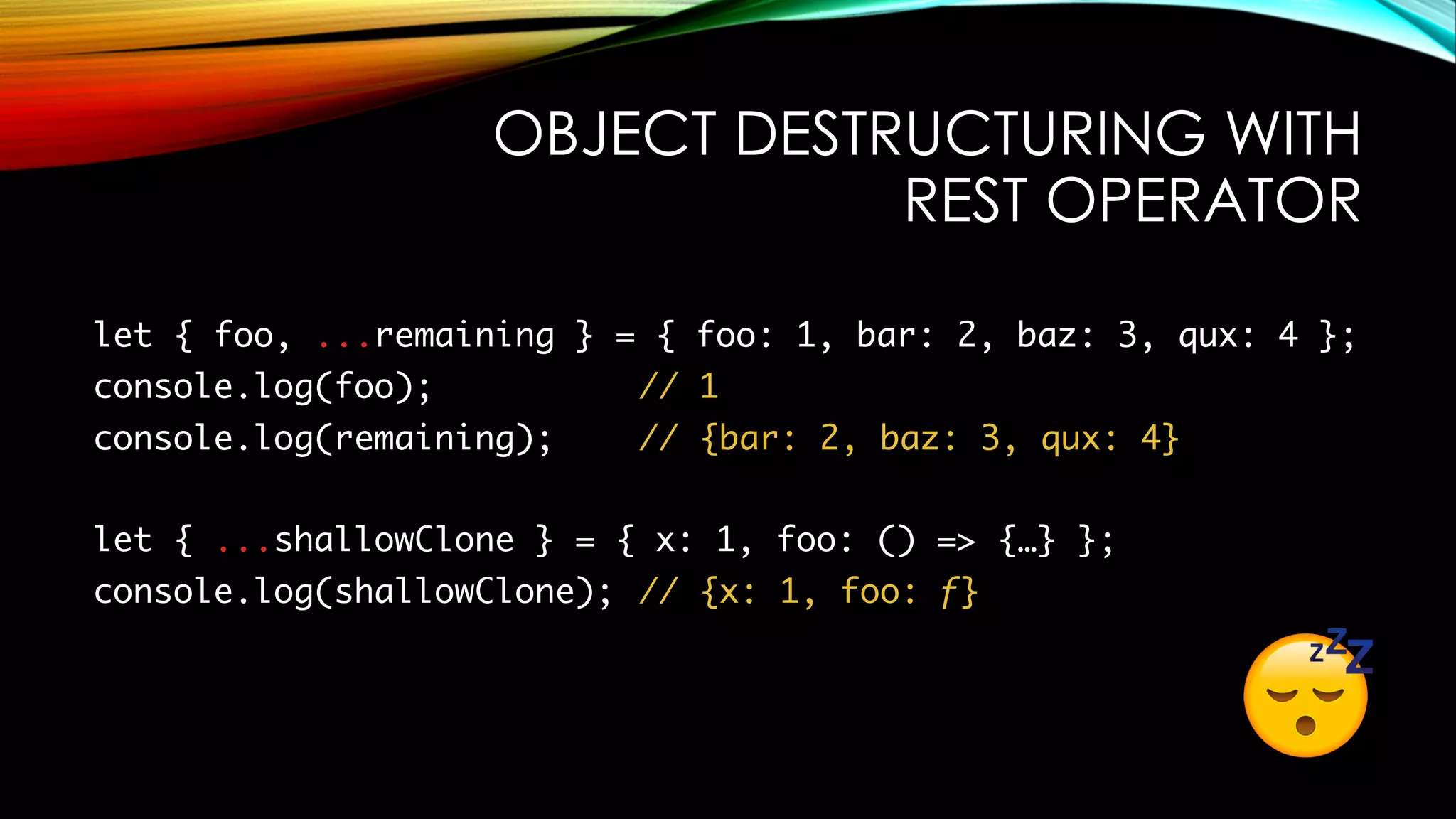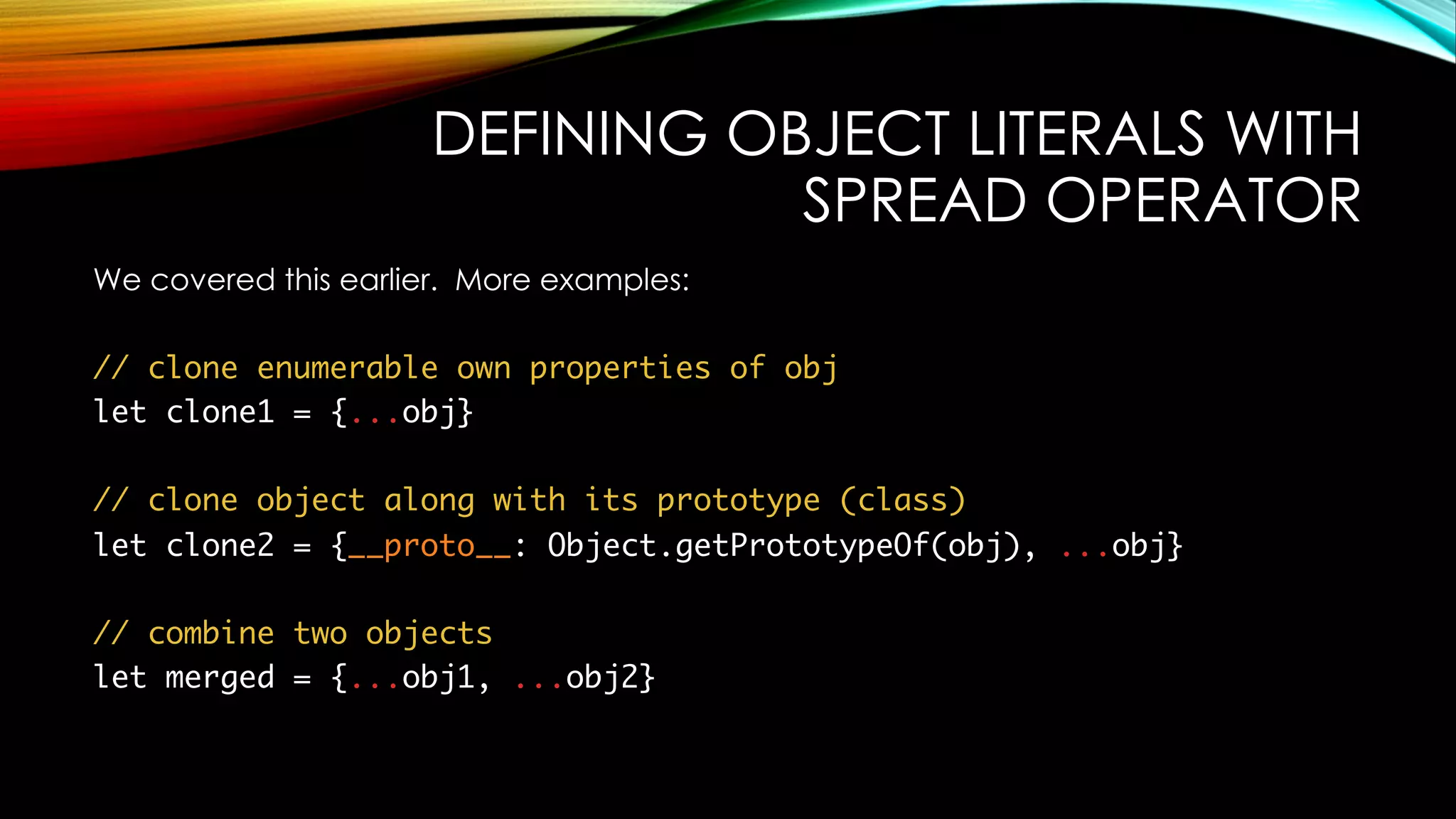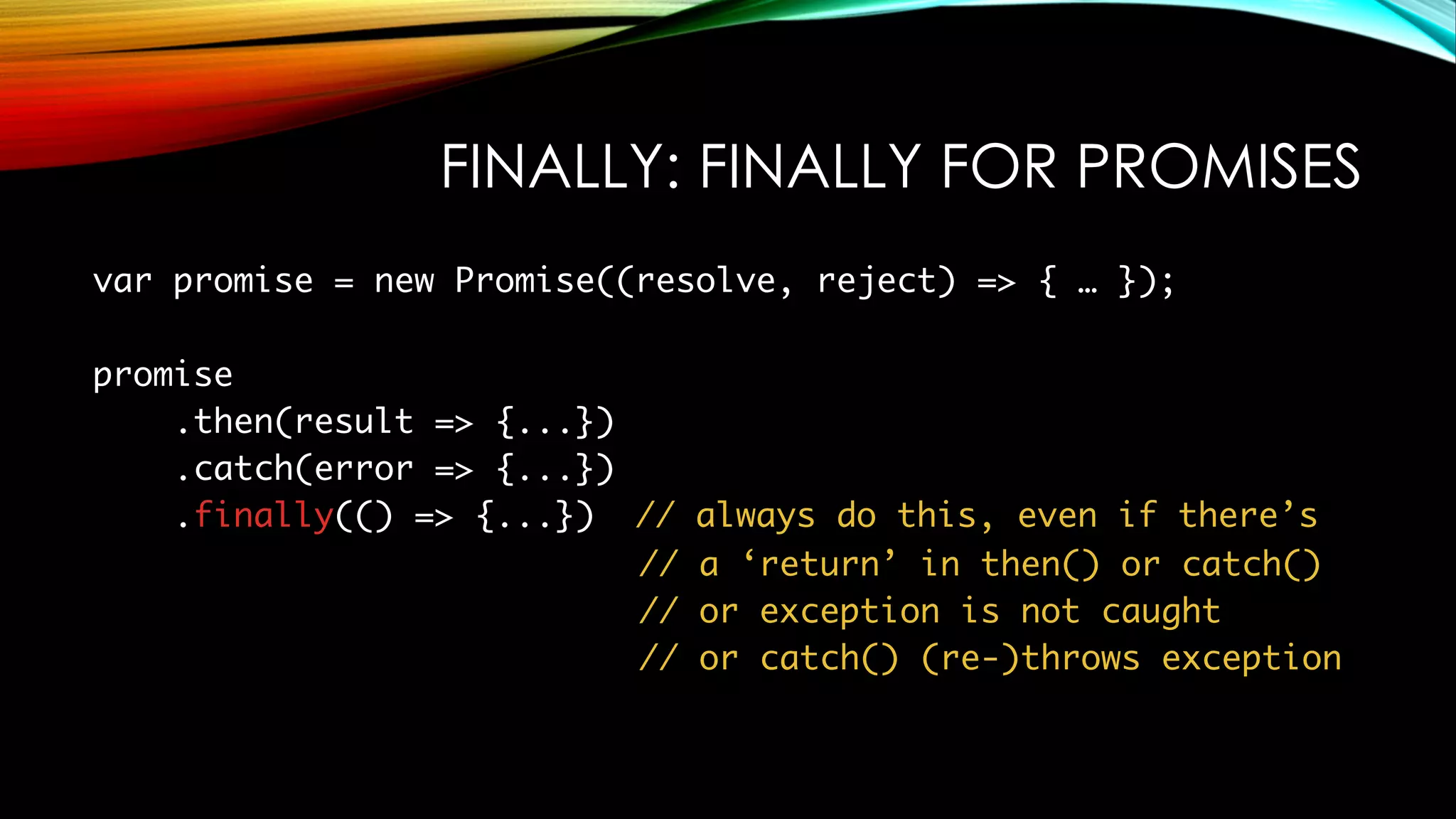This document summarizes new features in JavaScript including:
- Template literals, arrow functions, and block-scoped variables introduced in ES6.
- Async/await and Promise improvements in ES7 and ES8 to simplify asynchronous code.
- Additional features in ES9 like asynchronous iteration and regular expression enhancements.
- ES2018 additions such as object destructuring with rest/spread operators and finally for promises.
The document provides examples and explanations of many modern JavaScript capabilities.

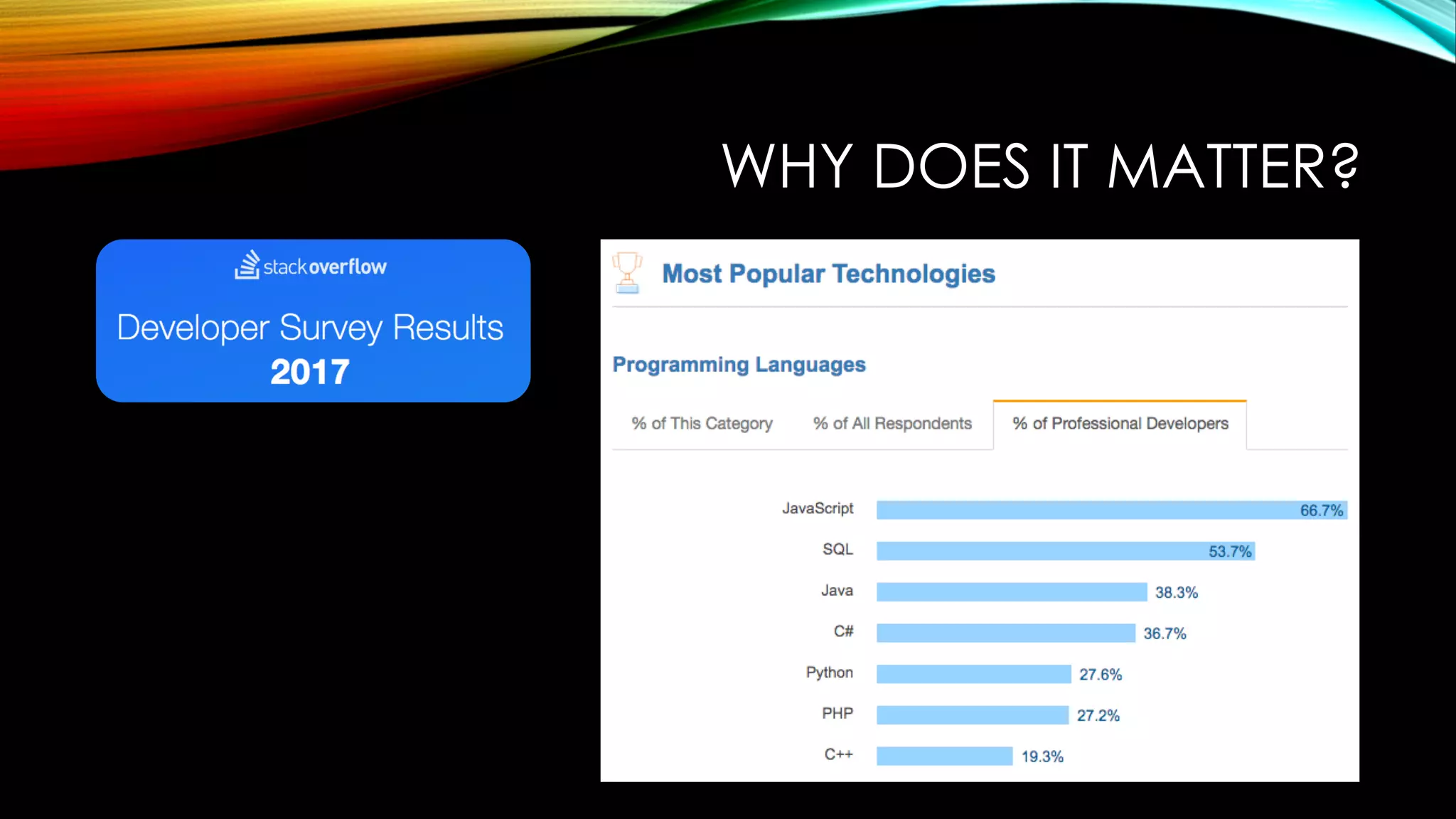
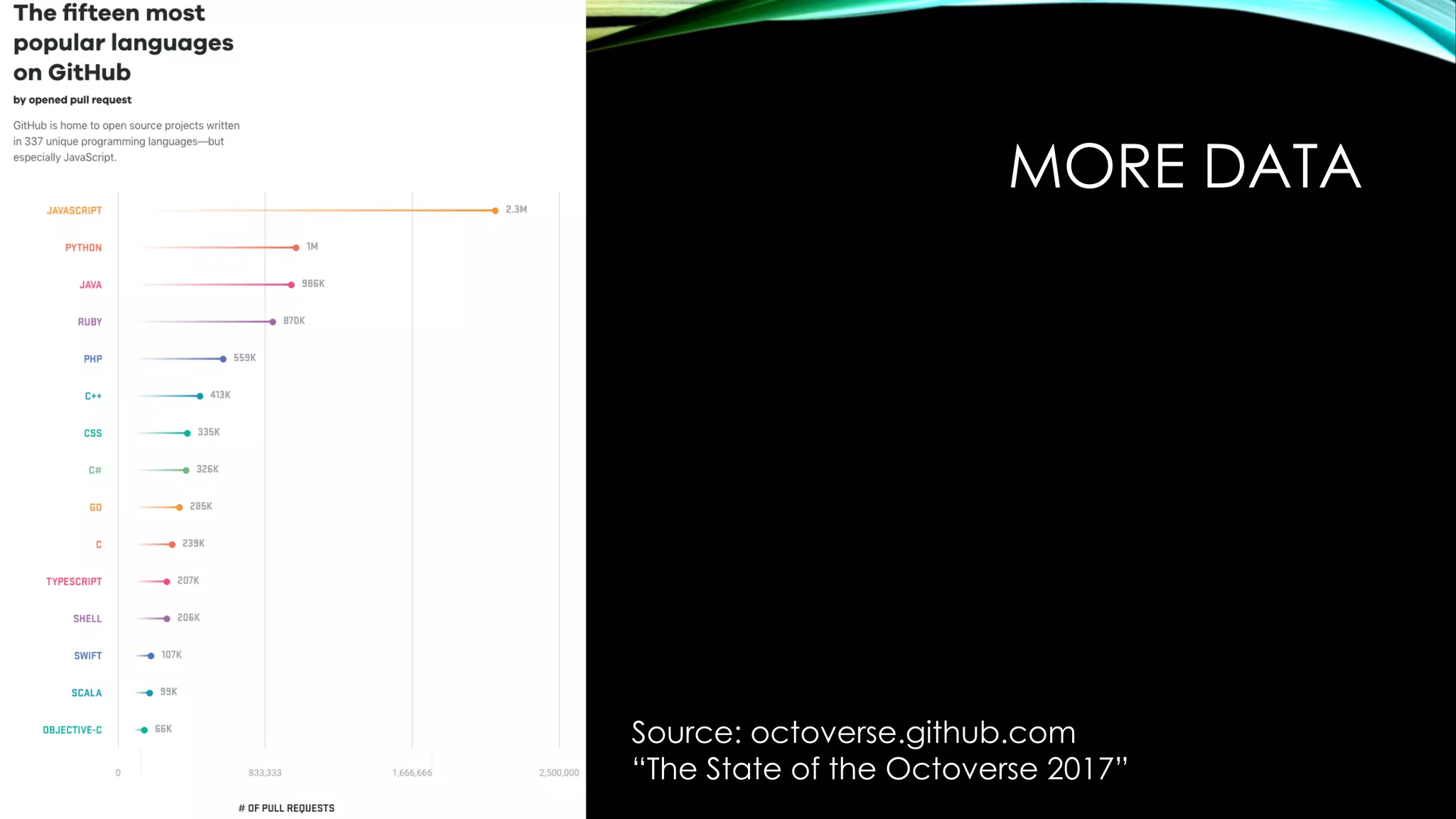

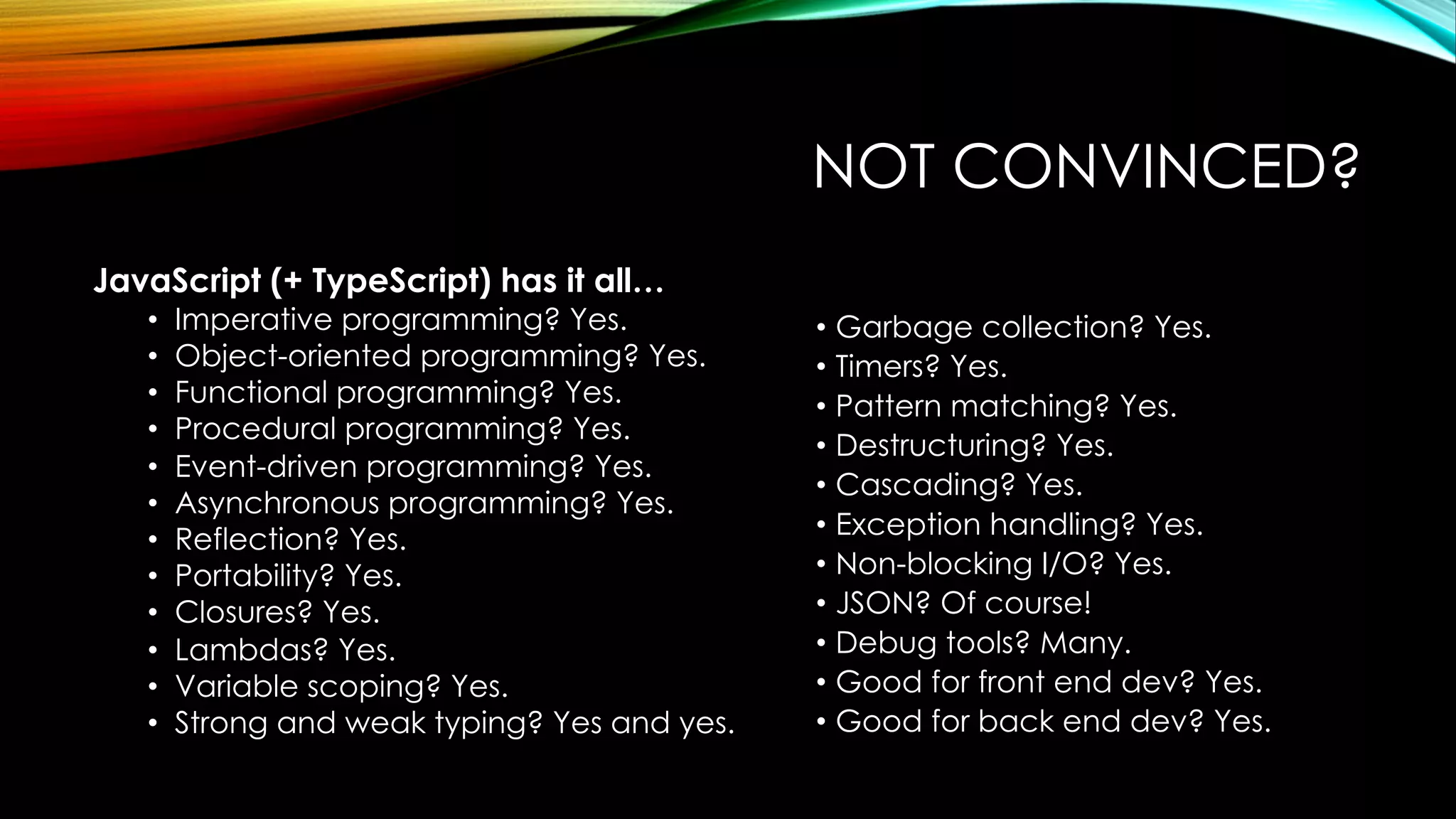

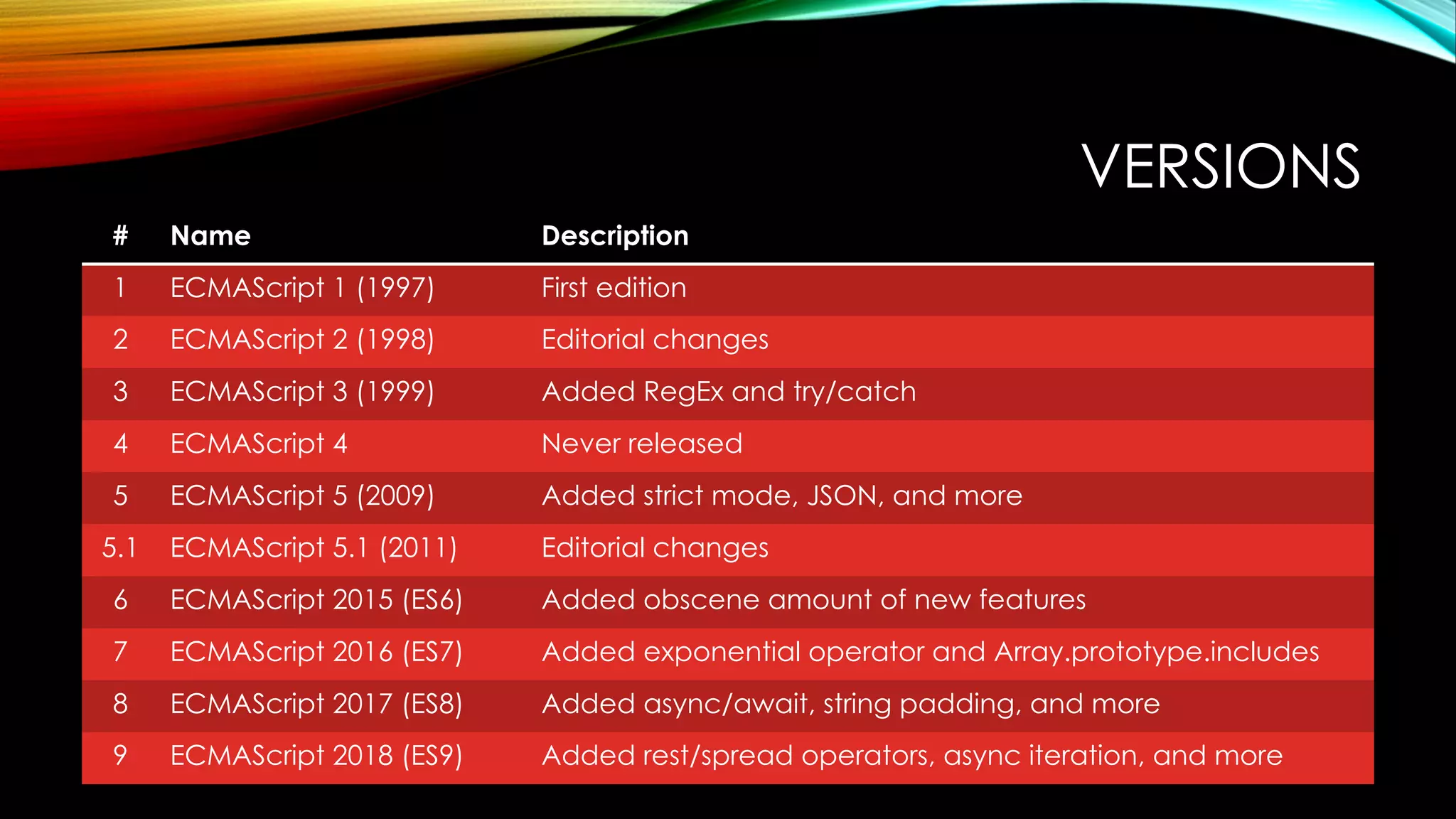

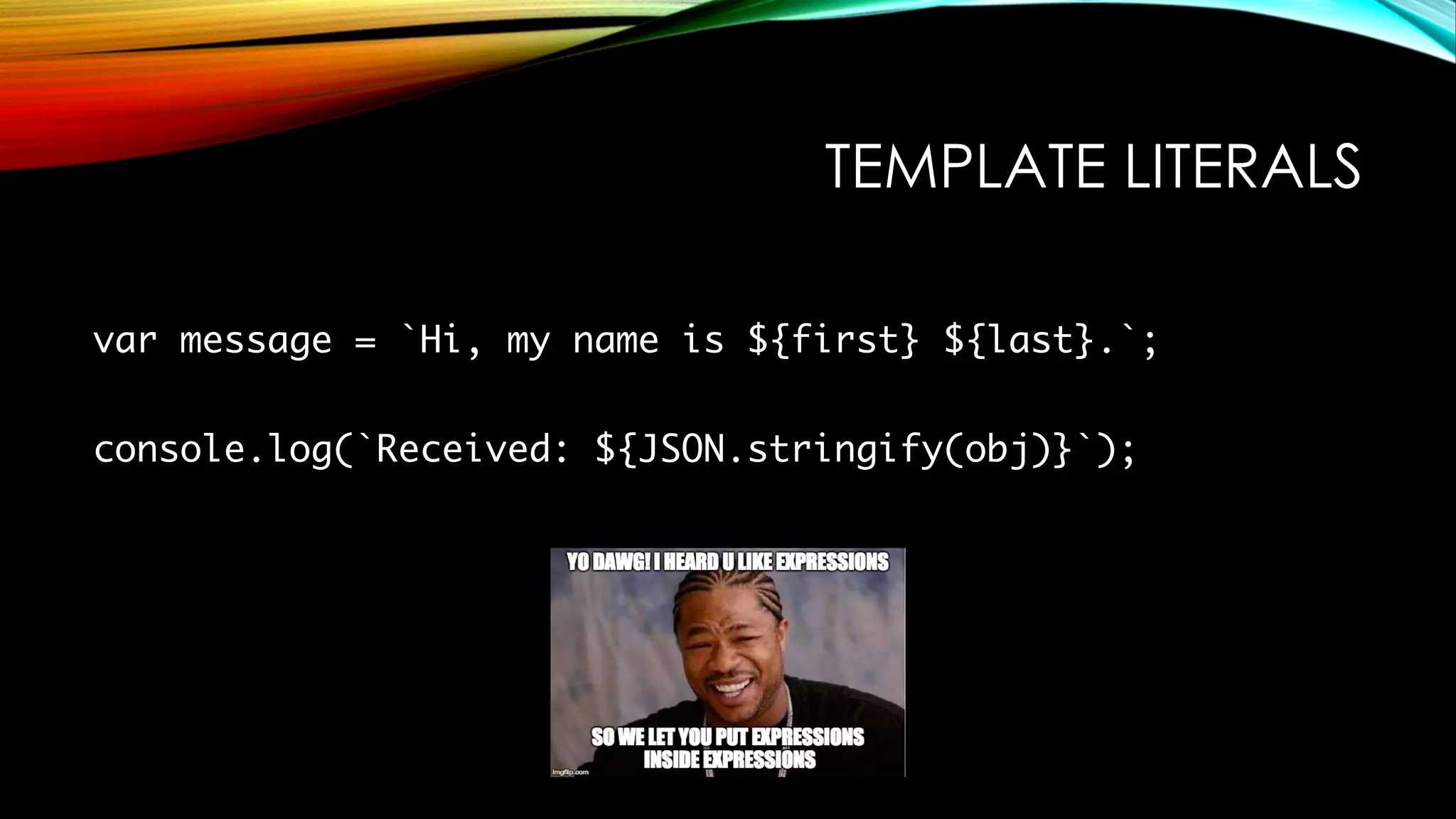
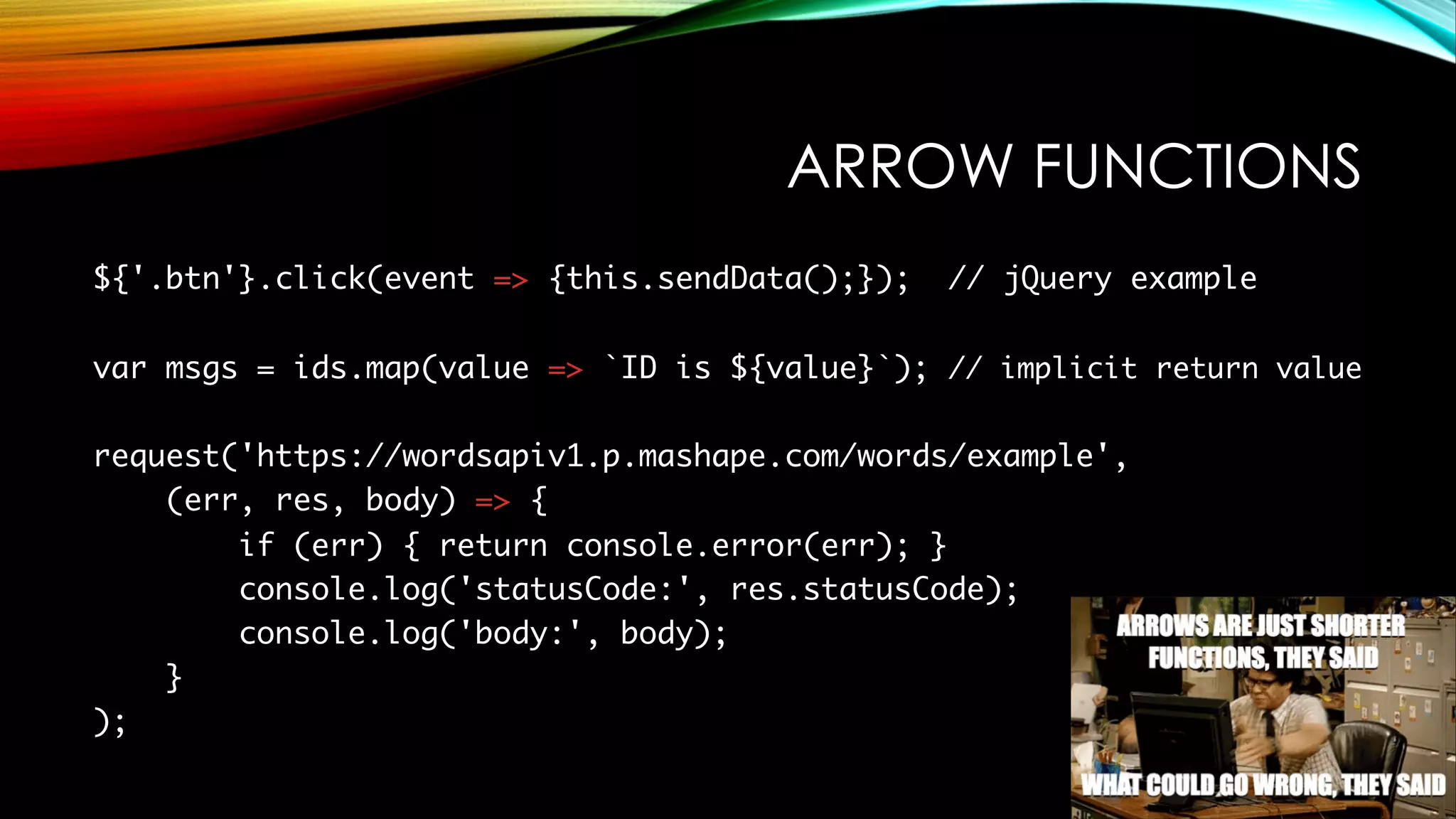
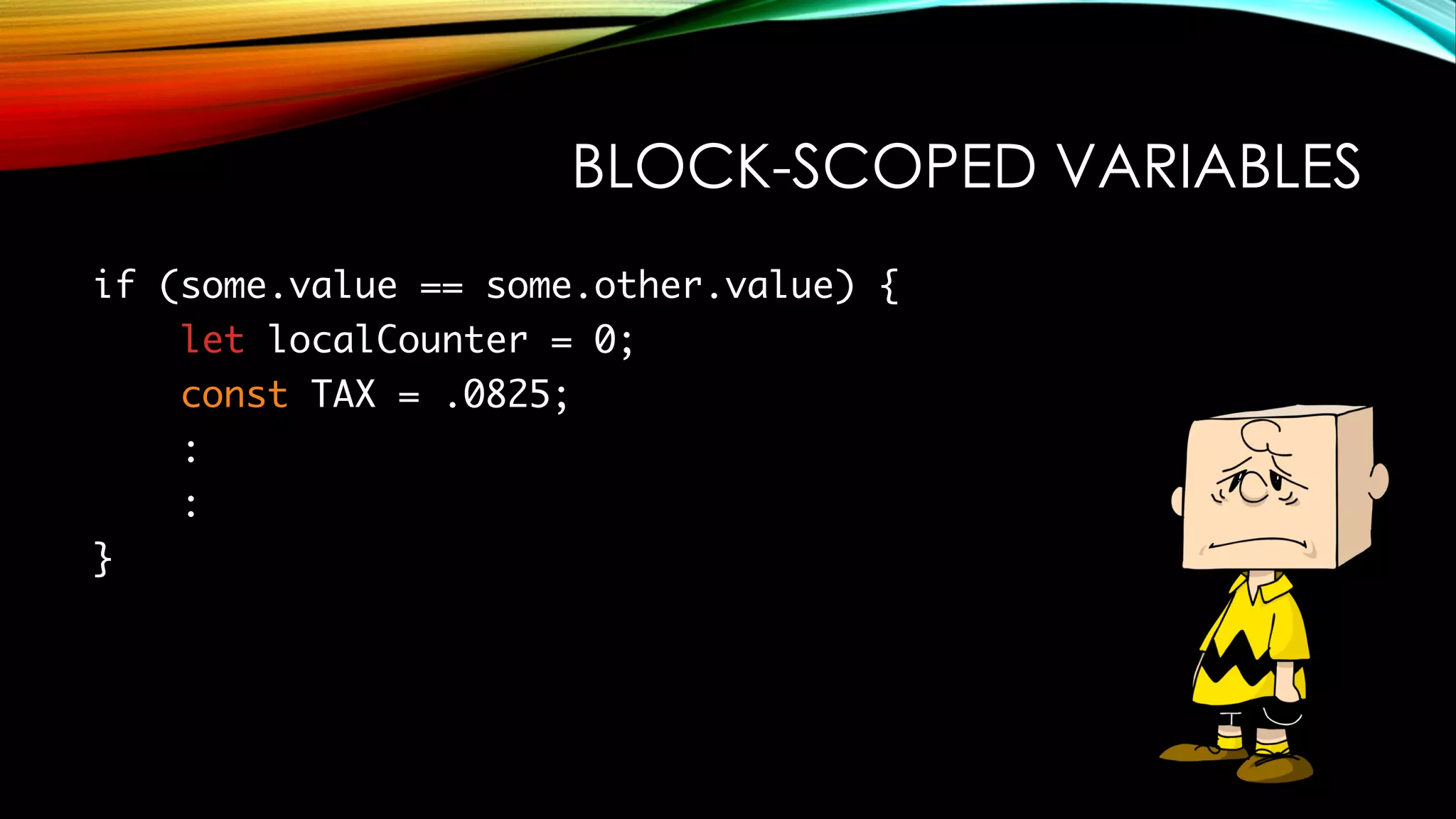
![SPREAD OPERATOR
function (...args) { }
var arr1 = [1, '2', 3];
var arr2 = [...arr1, '4', 5];
var sarahManning = {...kendallMalone}; // shallow obj cloning
// this one is only supported in ES9 and above!
var newObject = {...template, newAttr, oldAttr: newValue};](https://image.slidesharecdn.com/whatsnewinjavascript-180918195638/75/What-s-New-in-JavaScript-12-2048.jpg)
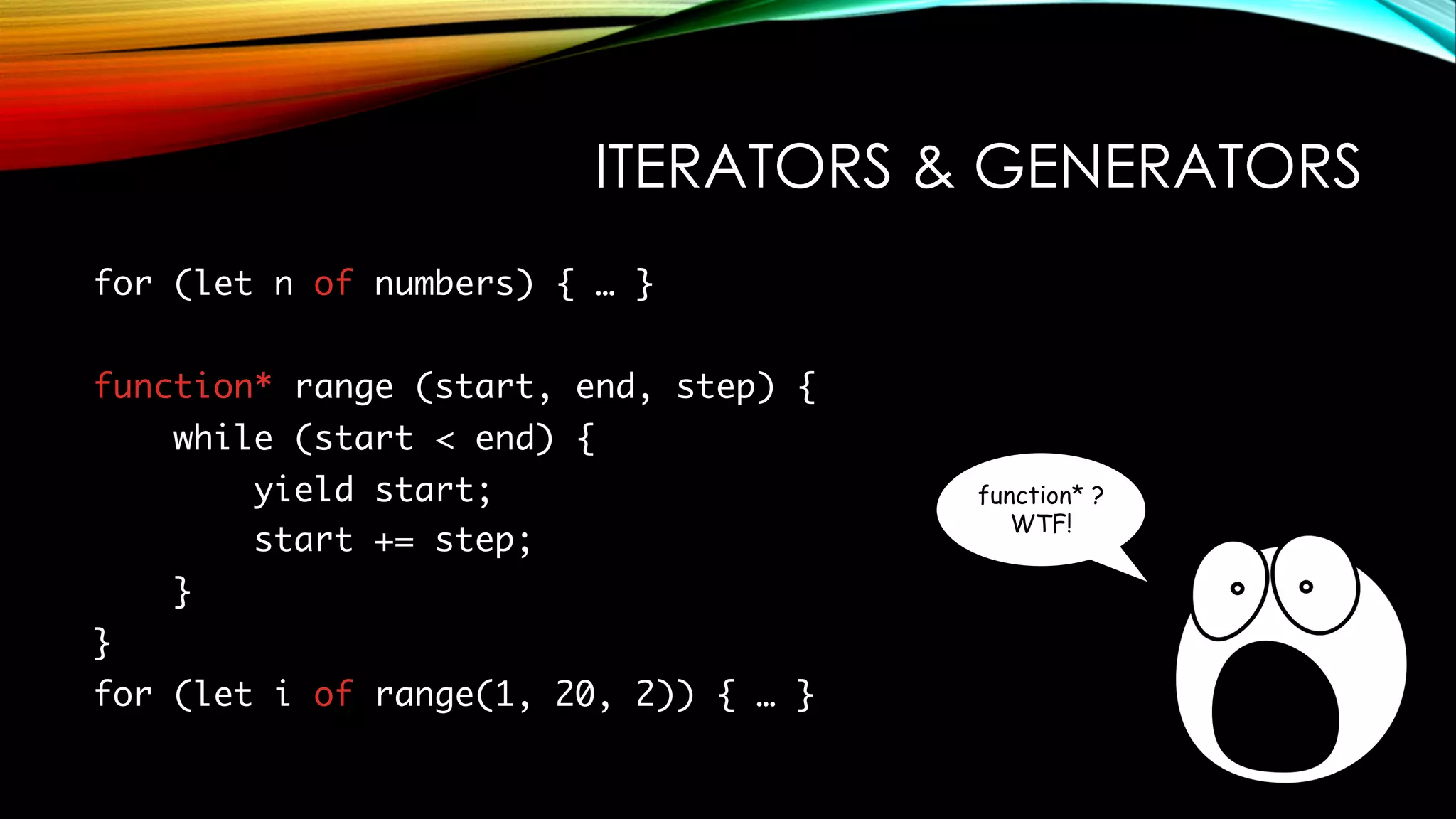
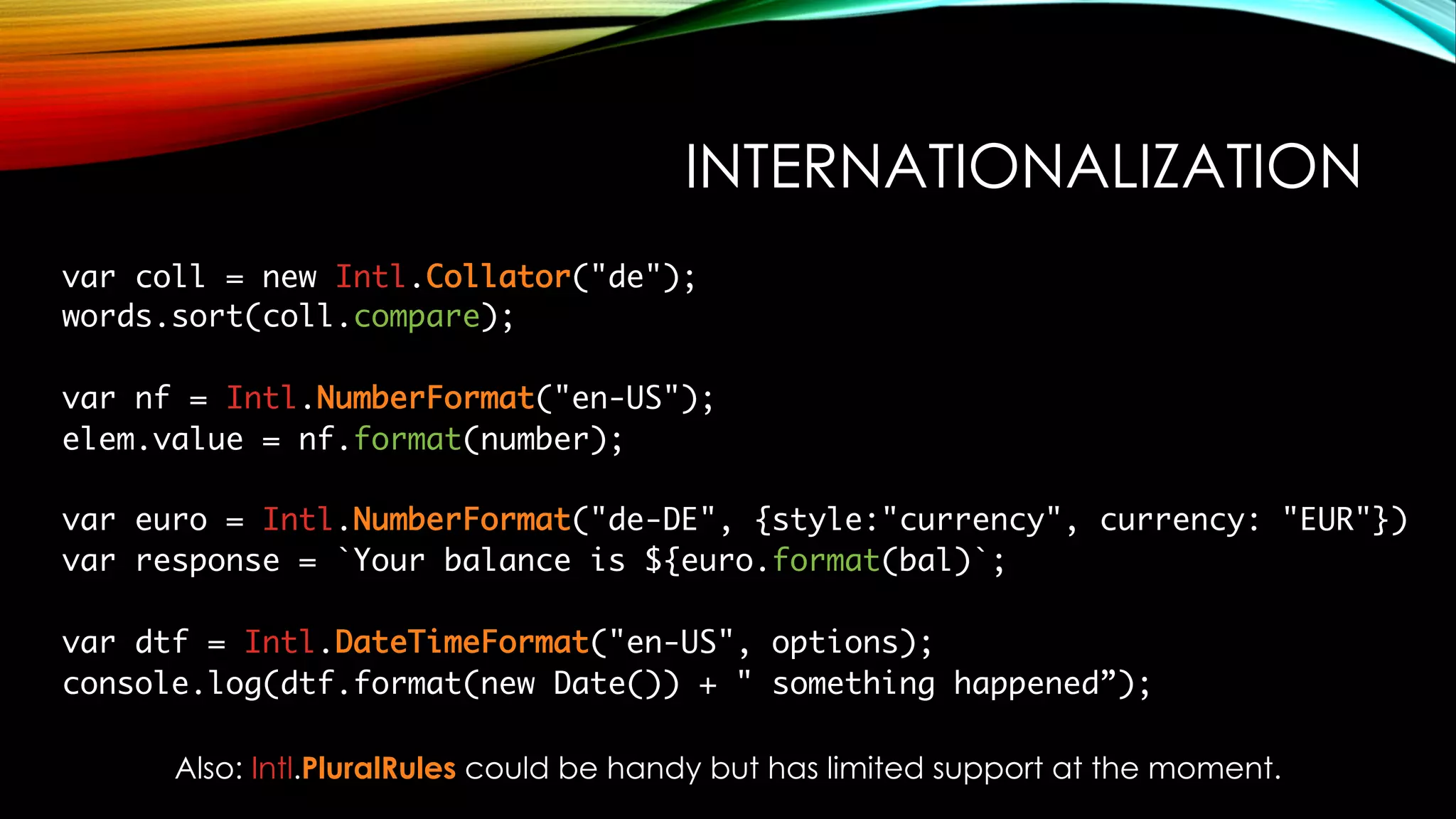
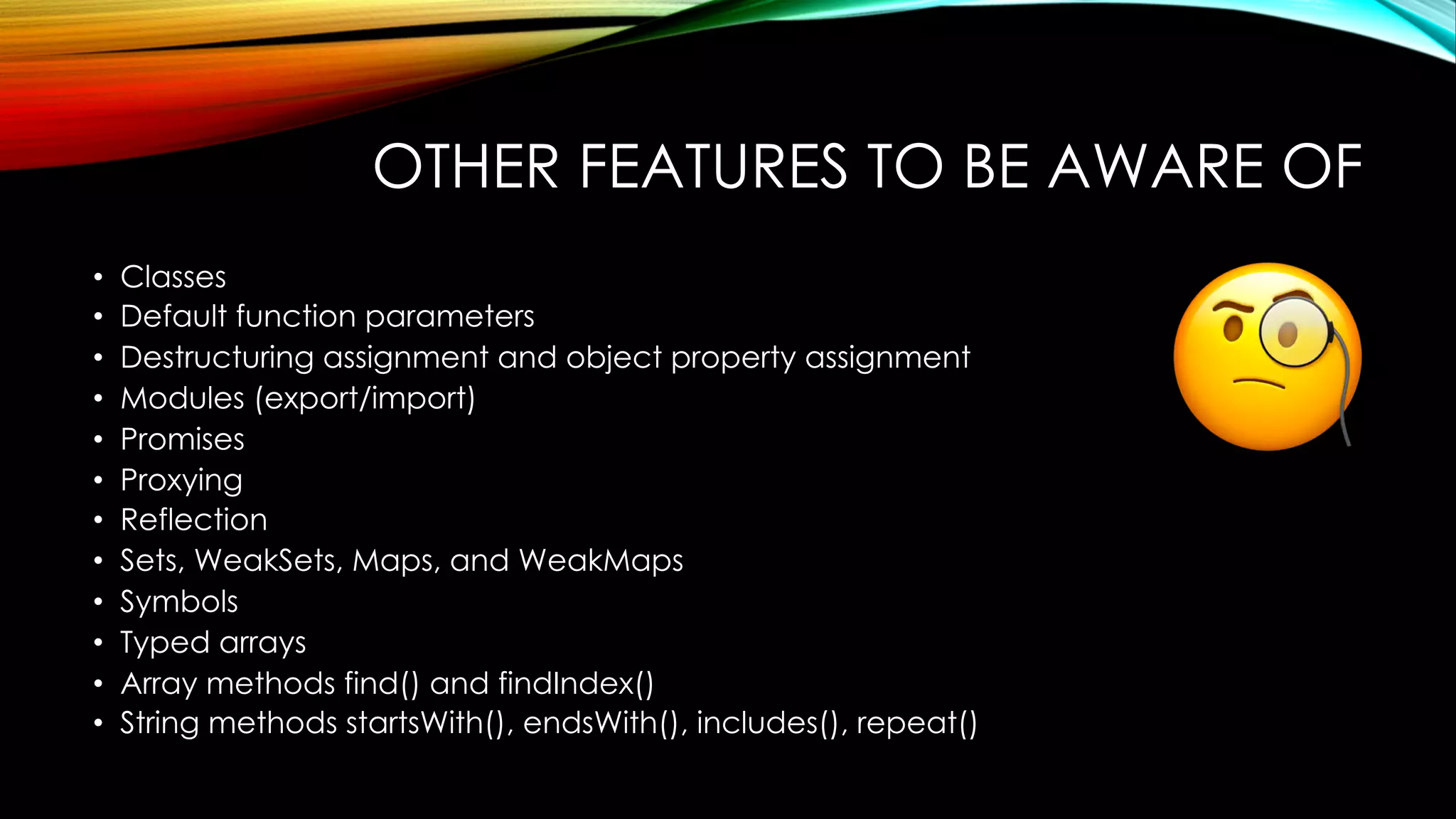

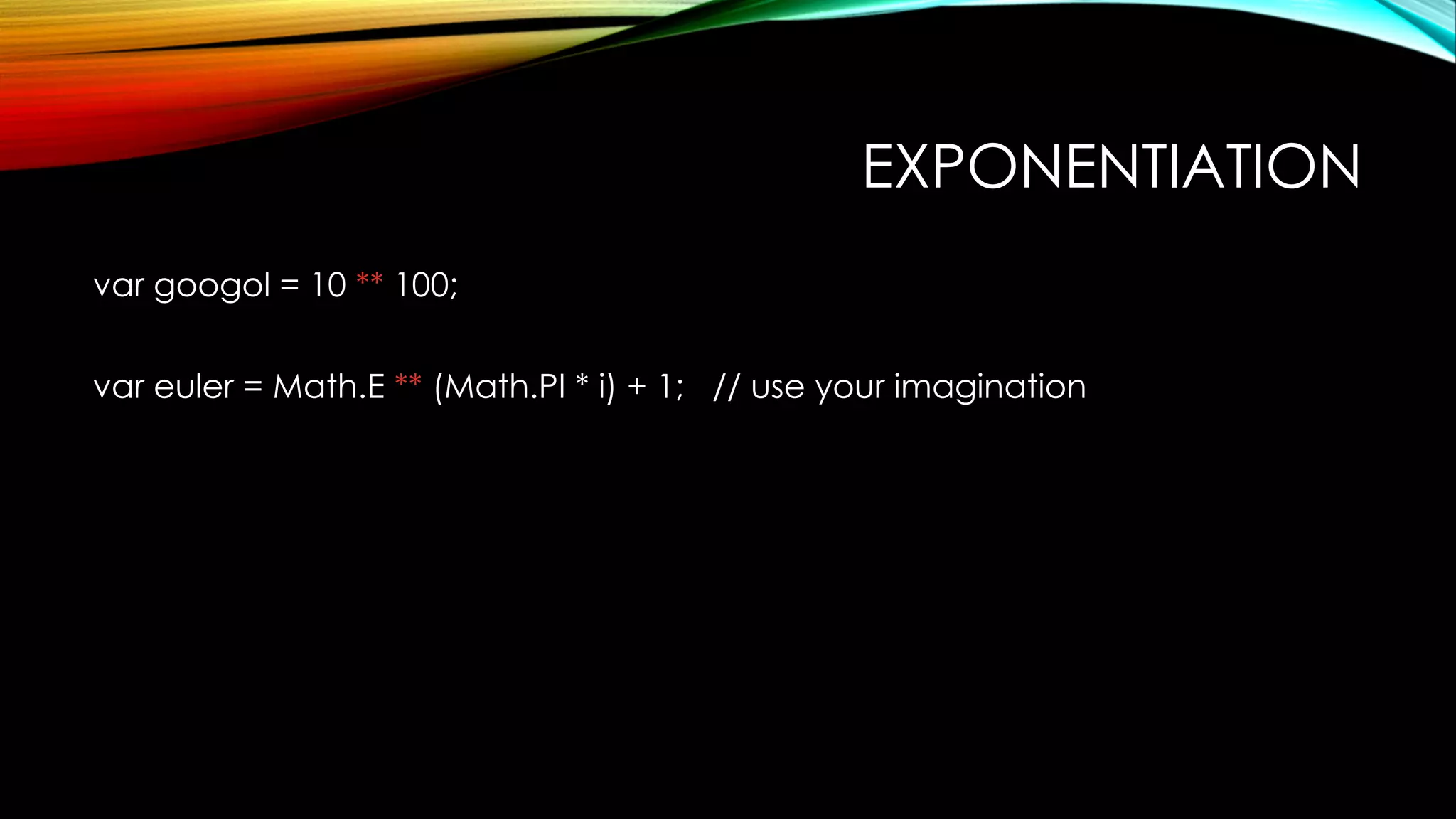
![ARRAY INCLUDES
> ['red', 'yellow', 'green', 'blue'].includes['red’]
true
> [2, 3, 5, 7, 11, 13, 17, 19, 23, 29].includes[1]
false](https://image.slidesharecdn.com/whatsnewinjavascript-180918195638/75/What-s-New-in-JavaScript-18-2048.jpg)

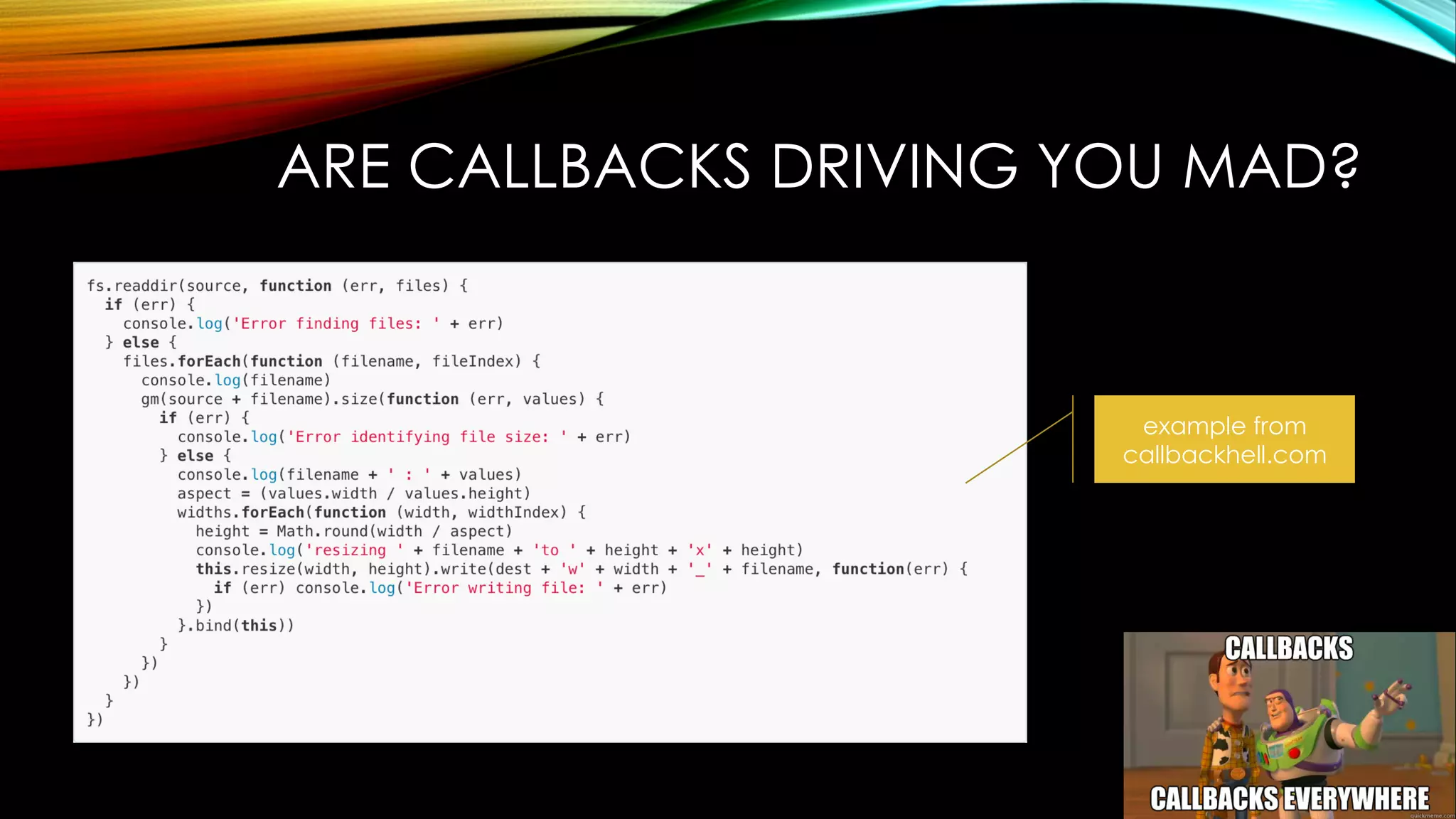
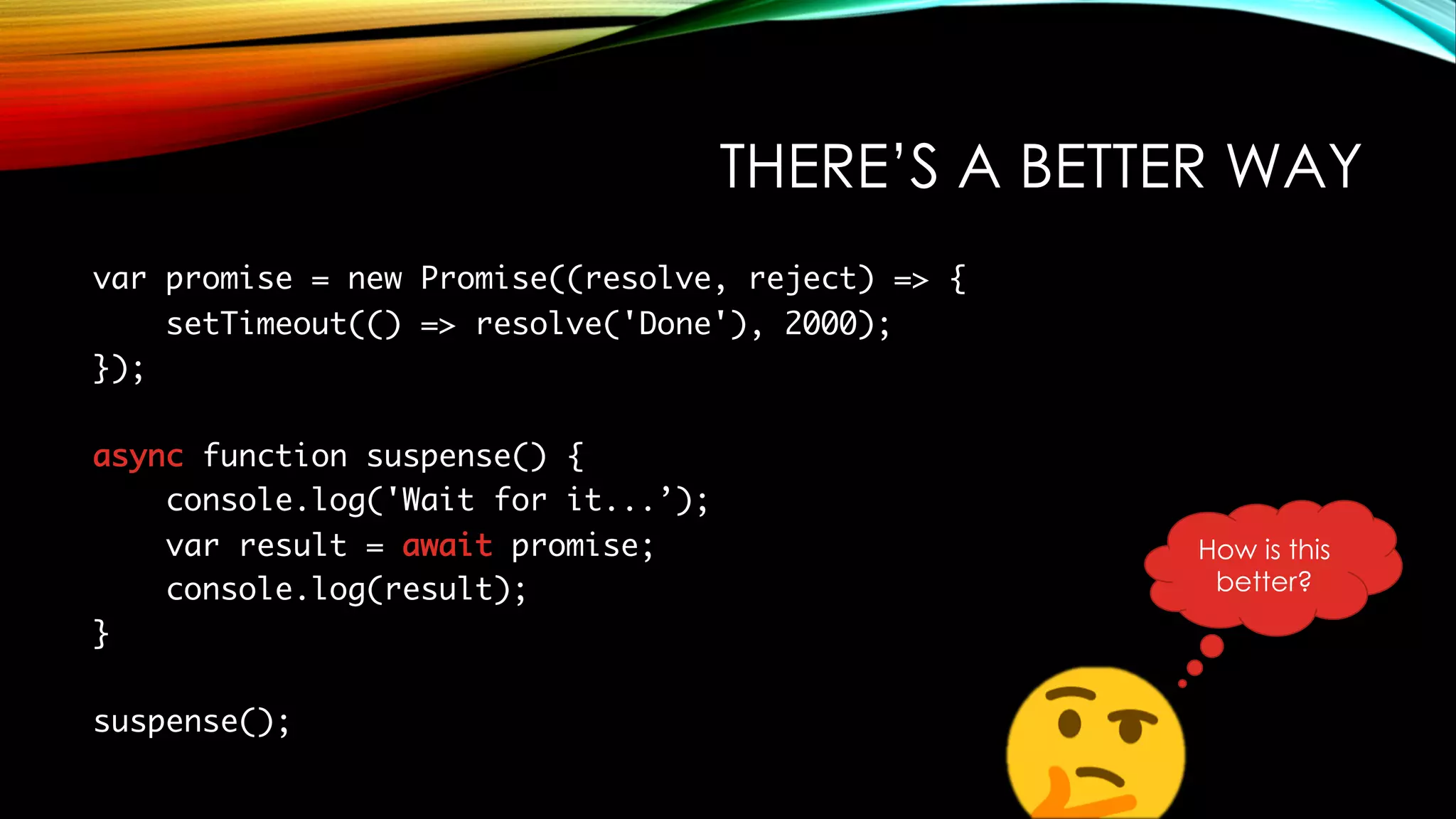
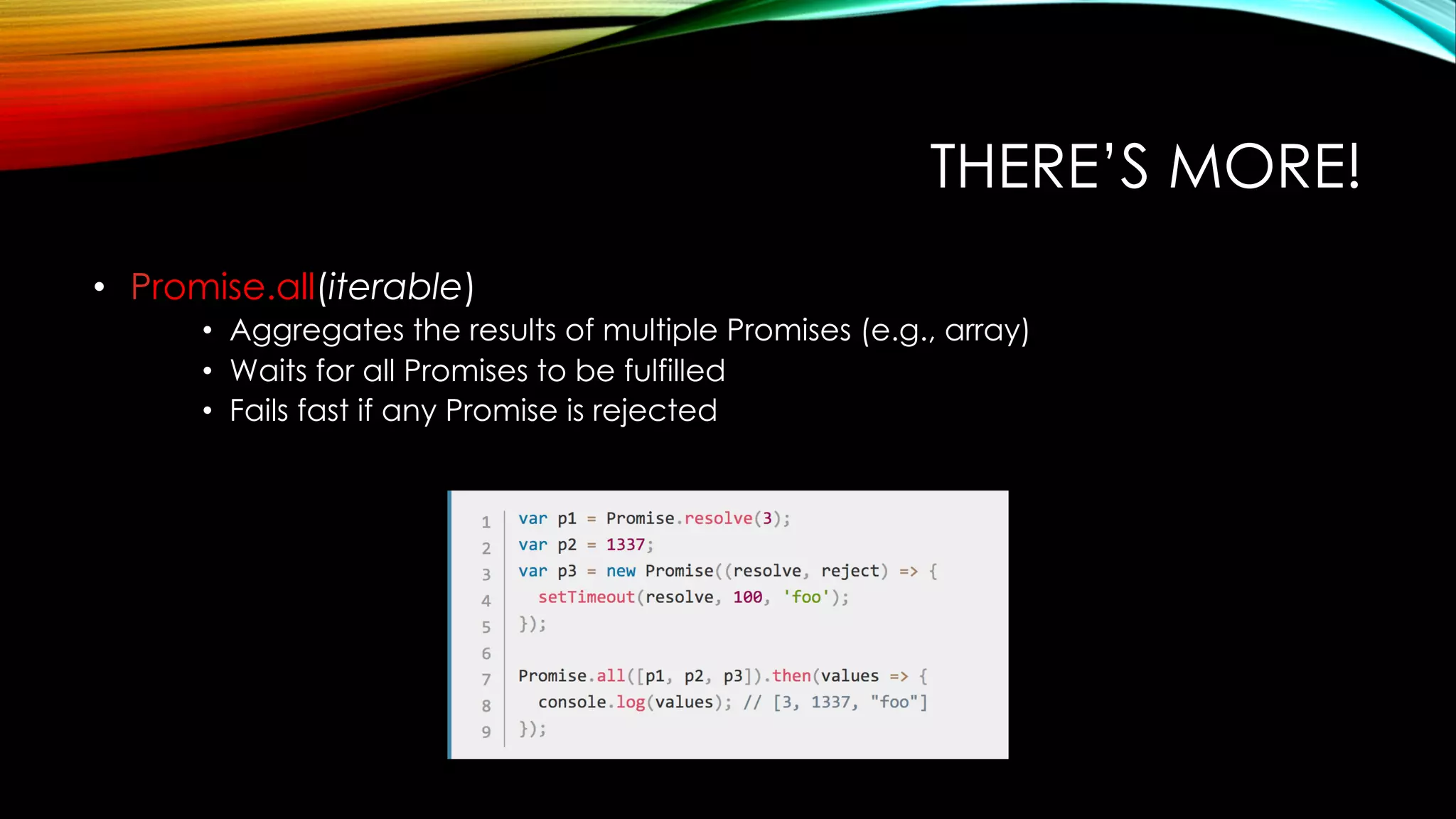


![ASYNCHRONOUS ITERATION
async function* createAsyncIterable(array) {
for (const elem of array) { yield elem; }
}
async function f() {
const asyncIterable = createAsyncIterable(['a', 'b']);
const asyncIterator = asyncIterable[Symbol.asyncIterator]();
console.log(await asyncIterator.next()); // { value: 'a', done: false }
console.log(await asyncIterator.next()); // { value: 'b', done: false }
console.log(await asyncIterator.next()); // { value: undefined, done: true }
}](https://image.slidesharecdn.com/whatsnewinjavascript-180918195638/75/What-s-New-in-JavaScript-25-2048.jpg)
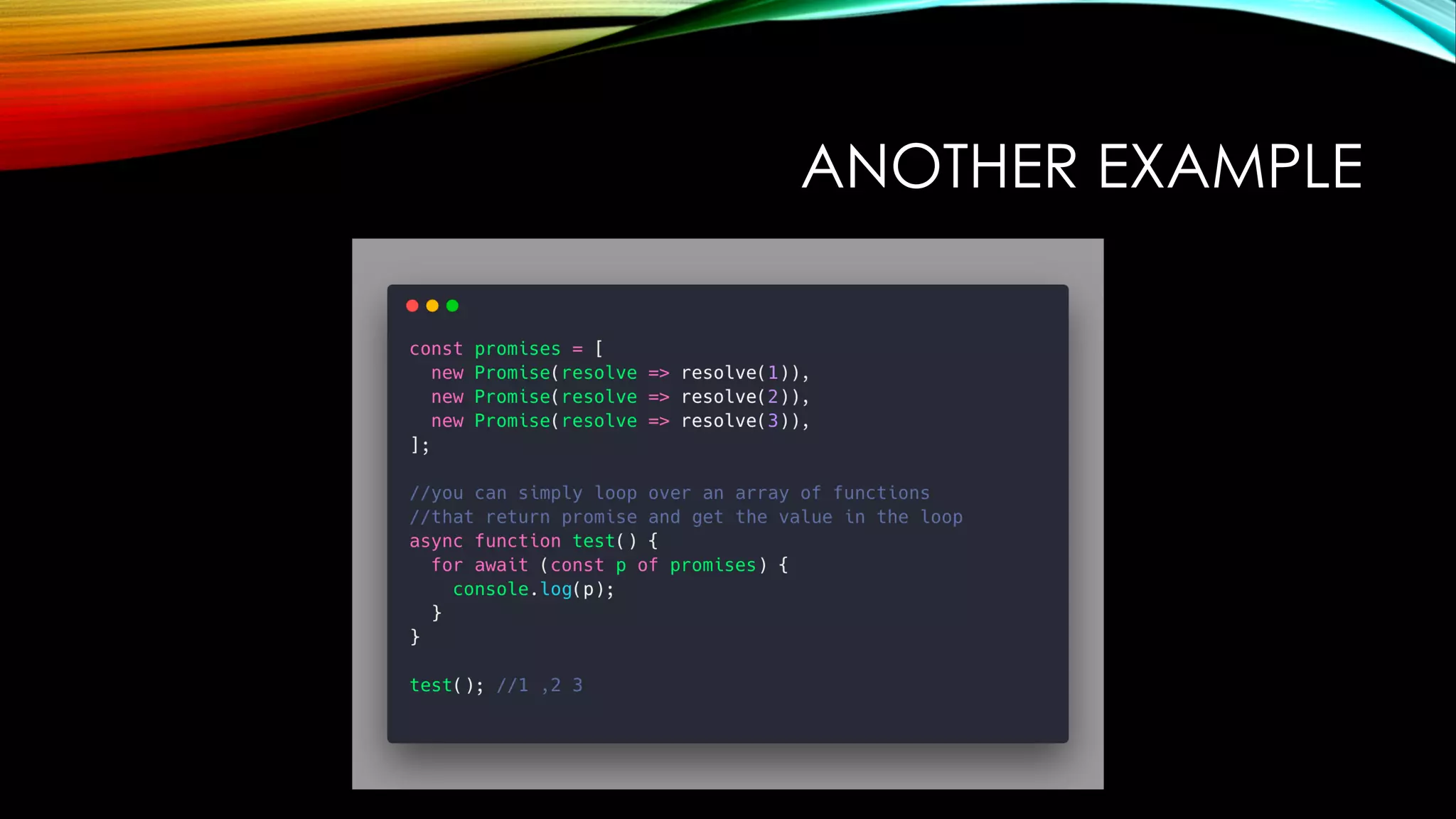
![REGEXP ENHANCEMENTS
• Named capture groups
/(?<year>[0-9]{4})-(?<month>[0-9]{2})-(?<day>[0-9]{2})/.exec('2018-06-29').groups.year
• Unicode property escapes
Look this up… it’s complicated (but really cool)
• Lookbehind assertions
/(?<=$)[0-9]+/ // captures digits following a dollar sign ($)
• s (dotAll) flag
• /s means dot (.) also matches line terminator chars
• /u means dot (.) also matches unicode characters](https://image.slidesharecdn.com/whatsnewinjavascript-180918195638/75/What-s-New-in-JavaScript-27-2048.jpg)
